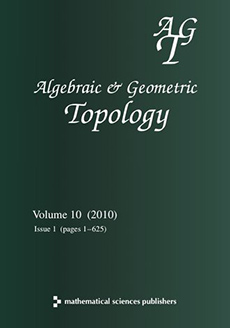Abstract
We study the maximal entropy per unit generator of point-push mapping classes on the punctured disk. Our work is motivated by fluid mixing by rods in a planar domain. If a single rod moves among fixed obstacles, the resulting fluid diffeomorphism is in the point-push mapping class associated with the loop in traversed by the single stirrer. The collection of motions where each stirrer goes around a single obstacle generate the group of point-push mapping classes, and the entropy efficiency with respect to these generators gives a topological measure of the mixing per unit energy expenditure of the mapping class. We give lower and upper bounds for , the maximal efficiency in the presence of obstacles, and prove that as . For the lower bound we compute the entropy efficiency of a specific point-push protocol, , which we conjecture achieves the maximum. The entropy computation uses the action on chains in a –covering space of the punctured disk which is designed for point-push protocols. For the upper bound we estimate the exponential growth rate of the action of the point-push mapping classes on the fundamental group of the punctured disk using a collection of incidence matrices and then computing the generalized spectral radius of the collection.
Citation
Philip Boyland. Jason Harrington. "The entropy efficiency of point-push mapping classes on the punctured disk." Algebr. Geom. Topol. 11 (4) 2265 - 2296, 2011. https://doi.org/10.2140/agt.2011.11.2265
Information





